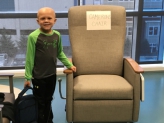Alternative Splicing in the Pathogenesis of Acute Lymphoblastic Leukemia
Background
The primary cause of leukemia is so-called translocations, where two separate genes residing on different chromosomes are joined together. The creation of fusion genes, together with silencing of another class of genes called tumor suppressors, causes the white blood cells to expand out of control and eventually displace normal blood cells, resulting in acute leukemia. In many patients leukemias do not respond to treatment, therefore there is a strong interest in designing new therapies based on reactivation of dormant tumor suppressors. In some patients, these tumor suppressors are damaged at the DNA levels by mutations and cannot be salvaged. Fortunately, such damaging mutations are relatively rare in leukemia. Our central idea is that non-mutated tumor suppressors are instead inactivated at the RNA level and that this inactivation can be reversed. This is because unlike DNA which is very stable, RNA molecules are rapidly turned over and re-constructed from building blocks called exons. When the exons are assembled incorrectly or out of order, the resulting protein code is scrambled. This is precisely what we found in many leukemias.exons are assembled incorrectly or out of order, the resulting protein code is scrambled. This is precisely what we found in many leukemias.
Project Goal
We propose to investigate whether exon mis-assembly is indeed what is causing inactivation of tumor suppressors. We will then attempt to restore proper exon assembly, either by delivering artificial pieces of “guiding” RNAs or by inactivating the proteins that cause exon mis-assembly in the first place. We believe that such molecular approaches would be much less toxic than current therapies and could be used to treat even chemotherapy-resistant patients.
Project Update 2020
We propose to investigate whether exon mis-assembly is indeed what is causing inactivation of tumor suppressors, specifically those responsible for resistance to therapy. We have generated several artificial pieces of guiding RNAs that allow us to restore proper exon assembly. We are now poised to test whether these RNAs could be used to re-sensitize leukemias to therapy.

